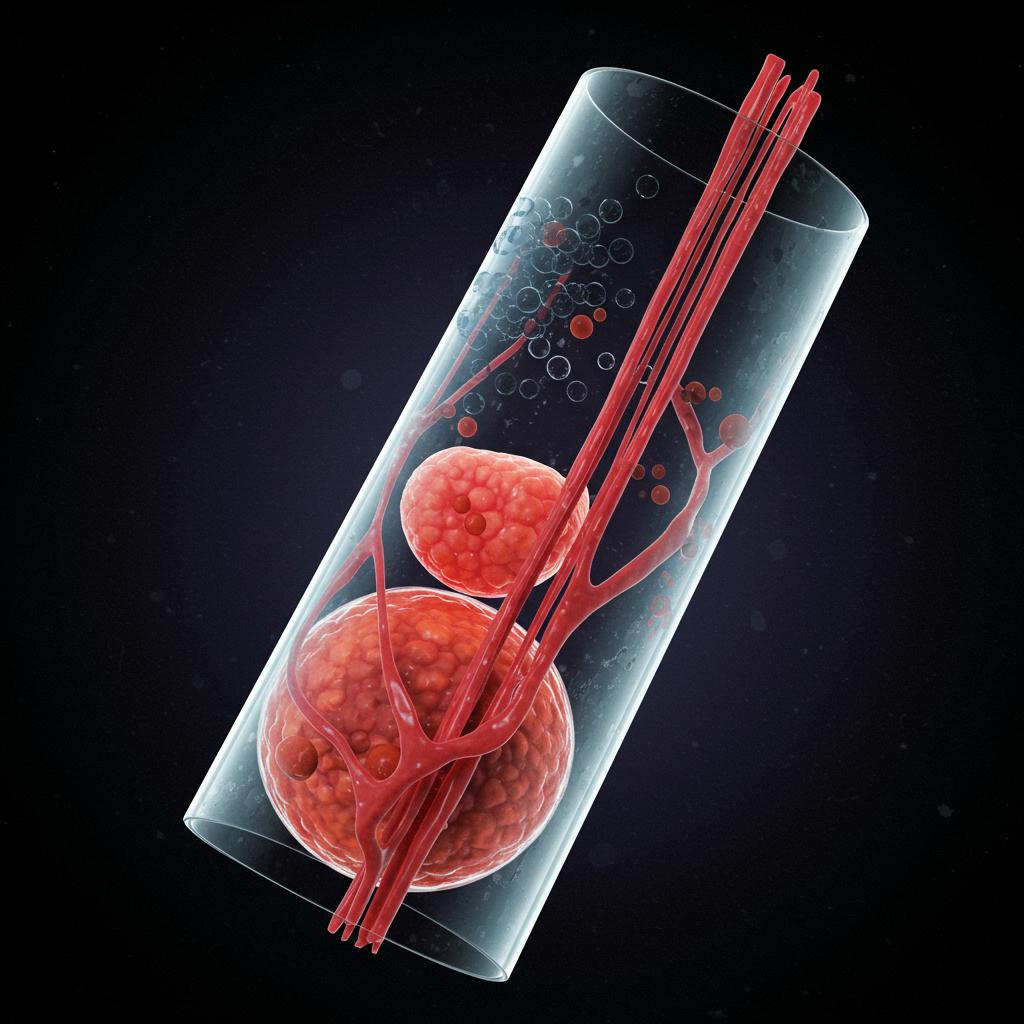
Imagine a non-invasive treatment that could make cancer therapies more effective. That’s the promise of histoplasty, a novel approach using focused ultrasound to reshape the tumor’s environment and enhance drug delivery. It’s like loosening the soil around a plant to help it absorb water and nutrients more effectively – but in this case, we’re targeting tumors.
Researchers tested this exciting technique on a mouse model of breast cancer (4T1), using a specialized ultrasound device to deliver precisely controlled acoustic energy. Think of it like a microscopic sonic massage for the tumor. The energy isn’t intended to destroy the tumor directly (that’s ablation), but rather to modify its structure and make it more receptive to treatment.
Here’s what they found:
- Improved drug delivery: Histoplasty significantly boosted the penetration of liposomal doxorubicin, a chemotherapy drug, into the tumors. The treated tumors showed over two times the drug uptake compared to untreated tumors. This suggests histoplasty could make chemotherapy more potent and potentially reduce the dosage needed, minimizing side effects.
- Reshaping the immune landscape: Cancer often creates a protective shield around itself, suppressing the immune system’s ability to attack it. Histoplasty appears to disrupt this shield. The research showed a significant increase in helpful immune cells, like macrophages, which engulf and destroy invaders. At the same time, the frequency of myeloid-derived suppressor cells (MDSCs), which hinder the immune response, significantly decreased. This shift in the tumor’s immune microenvironment could make immunotherapies, which harness the body’s own defenses to fight cancer, more effective.
- Encouraging T-cell infiltration: T-cells are crucial players in the immune system’s fight against cancer. The study showed a positive trend towards increased presence of both CD8+ (cytotoxic) and CD4+ (helper) T-cells within the treated tumors, though the results weren’t quite statistically significant. This suggests that histoplasty might help recruit these immune warriors to the tumor site, further enhancing the body’s anti-cancer response.
- Collagen remodeling: The tumor’s extracellular matrix (ECM), a network of proteins and other molecules surrounding the cancer cells, often acts as a barrier to drug delivery. Histoplasty appears to remodel this matrix, potentially creating pathways for drugs to reach the tumor cells more efficiently. This was observed through second harmonic generation imaging, a technique that visualizes collagen, a major component of the ECM.
While these results are preliminary and further research is needed, histoplasty offers a promising new frontier in cancer treatment. By non-invasively modifying the tumor’s environment, it could potentially enhance the effectiveness of existing therapies like chemotherapy and immunotherapy, leading to better outcomes for patients. The ability to improve drug delivery, modulate the immune response, and remodel the ECM makes histoplasty a compelling area of ongoing research with the potential to revolutionize how we approach cancer care.
